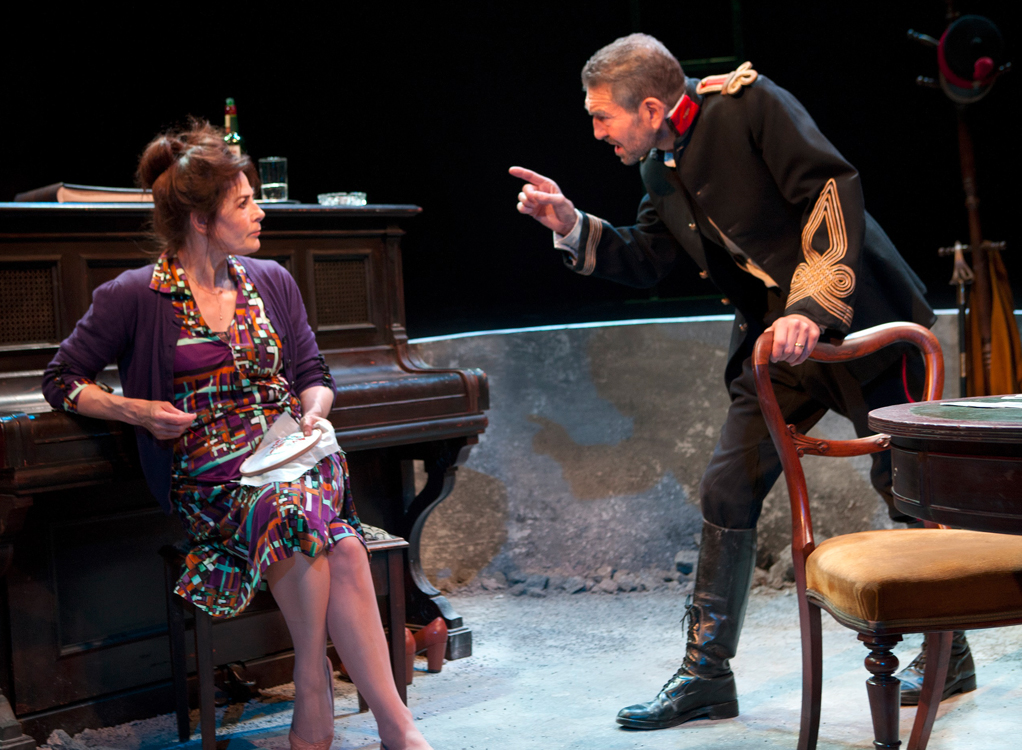In 1884 Swedish playwright August Strindberg was tried and acquitted of blasphemy after publishing a collection of short stories, Getting Married, that amongst other ideals sought to promote women as equals. The experience darkened his outlook. “My view now is,” he wrote, “everything is shit. No way out.”
Strindberg would return to the theme of marriage in his writing on a number of occasions, no doubt inspired by the problems within his own. In 1900 he wrote his darkest piece, Dance of Death, about a viciously dysfunctional partnership between a penniless army captain and a former actress. This soul-less match clearly contained enough macabre satire to appeal to Swiss dramatist Friedrich Dürrenmatt, who rewrote the piece as Play Strindberg in 1968. The Swinging Sixties were a good time to knock the hypocrisies of marriage. Four years earlier Edward Albee had enjoyed stellar success with Who’s Afraid of Virginia Woolf? which carried a similar theme.
In this new translation by Alistair Beaton, himself an extraordinarily accomplished playwright and political satirist (The Trial of Tony Blair, Feelgood etc.), Greg Hicks, Sally Dexter and Richard Clothier excel as the protagonists in this morbid pas de trois.
As in boxing, the action is played out over twelve ‘rounds’. Designers Max Jones and Ruth Hall give us a simple ‘ring’ area defined by a thin blue neon strip light, in which sit a card table and chairs, an upright piano and a coat stand. Outside this fighting ‘pit’, all is black.
The first half-minute is arguably the best. The actors announce the number and name of the round: ”Round One: Conversation Before Dinner.” Sally Dexter as Alice, and her army uniform-clad hubby Edgar (Greg Hicks) sit in awkward silence – Alice sewing, Edgar gazing into nothingness. The safety catch on their mutual loathing of each other is ever so slowly easing to ‘off’. When the gloves do come off, the flesh is soon flayed… “What’s left of you is gluttony”; “I don’t know pleasure, what’s that?” and “Why can’t you die?” A right jab there, an uppercut there.
Pretty dire stuff this, but what elevates the piece is the sheer force of performance. Hicks, Dexter and Clothier take the space by the scruff of the neck and command you damn well follow them into their hell! And Clothier’s suave depiction of shady cousin Kurt coolly adds deceit and roguery to the mix.
Watching the balance of power shift between the three characters over the course of the twelve rounds is compelling viewing, as is Edgar’s extraordinary dance to Alice’s playing of the Dance of the Boyars. Like a clockwork soldier in his own dance macabre, he, like the others, has a few surprise moves left in him before he succumbs. ★★★★☆ Simon Bishop
Production photos by Simon Annand


